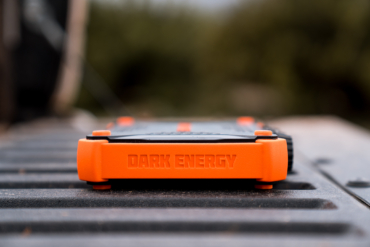Head injuries can be dangerous, and missing information can make them even worse. One company says it’s got the answers.
Anyone who cycles, rides moto, climbs, paddles whitewater, plays contact sports, or even drives OHVs knows head impact is a big deal. The HIT Impact seeks to provide instant head trauma information for all.
To do it, HIT (or High Impact Trauma) uses a small circular sensor and/or a headband. The athlete straps on the headband or sticks the sensor to the outside of their helmet — typically at the back of the head. From there, they or their trainer can use an app that measures and delivers impact data in real time.
The system transmits head impact G-force and warns the user, coach, or parent when it registers force above an adjustable threshold.
View this post on Instagram
Company founder and rugby player Euan Bowen started HIT 2 years ago. Seeking an inroad toward solutions for concussions in sports, he developed the project as a student at Edinburgh Napier University.
“Playing Rugby, you see the effects head impacts have on fellow players,” he said. “[P]roviding a device that can be easily worn to simplify the identification of head force change will rapidly grow our knowledge and safety appeal to young players.”
Pro Downhillers Put HIT to the Test
Bowen’s experiences in rugby informed the idea, but other athletes have begun to catch on; 555 RAAW Gravity Racing adopted the tech for its riders on the UCI Mountain Bike World Cup. With four riders aged 17-27, the team sought the widest margin of head trauma safety it could find; as demonstrated, young brains need protection in impact sports.
Measuring data would be essential. Traumatic brain injuries (concussions) aren’t always easy to spot, and symptoms vary massively across incidents. Collecting real-time data could help athletes establish a baseline.
“Crashes are part of our sport, but the amount of experience around brain injuries is limited. The right amount of recovery for brain injury used to be hard to determine,” RAAW Mountain Bikes said in a press release.
“[A]nd the decision to go back to training was often influenced by other motivations than health alone. Having the racers equipped with the HIT system is a great leap for brain injury protocols.”
555 RAAW Gravity Racing rider Luke Williamson said he’d previously suffered multiple concussions. He hopes HIT can gather accurate data to help him and his sport.
“[It can] be hard to make the correct decisions regarding concussions, especially if no major issues are shown at the time. Hopefully, access to the correct data can improve the informed decision-making process when things aren’t clear so that brain health isn’t compromised. Going forward, HIT and their product have the potential to play an important role in the sport,” said Williamson.
View this post on Instagram
How HIT Works
The HIT Impact uses an x, y, and z-axis accelerometer to track the wearer’s head movement. The system then measures G-force accordingly, displaying it both on the device and the app.
HIT Impact lights up red when the wearer exceeds the calibrated threshold and otherwise lights up green or yellow. The app also uses color-coded alerts and displays a number — from 0-140 Gs — in real time.
Bowen and the HIT team conducted final testing on the device at Edinburgh’s Heriot-Watt University. They calibrated the accelerometer that’s key to measuring the forces the wearable device undergoes.
The team subjected mannequins “wearing” the HIT Impact to cringe-inducing tests that, in the words of the BBC’s Paul Carter, “brings home how hard these impacts actually are, and how we overlook them in the speed of the game.”
If you’ve got data from an accurate accelerometer, it’s pretty easy to find your way to G-force. Find acceleration, then divide by time. Take that, factor in gravity, and you’ve got G-force.
Can HIT transform the way we interpret head injuries in sports? Time — and athletes’ willingness to adopt the technology and put it to the test — will tell. For now, it’s a universally wearable solution that doesn’t cost an arm and a leg, considering the potential benefit.
The HIT Impact costs £90 ($107) MSRP. The company makes it available now via its website “across all activities, for all ages.”








